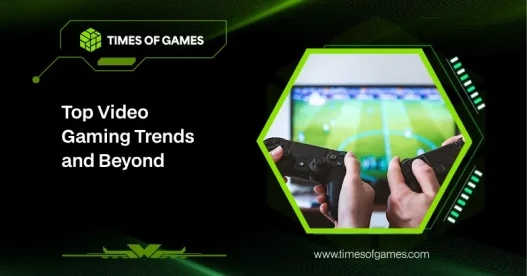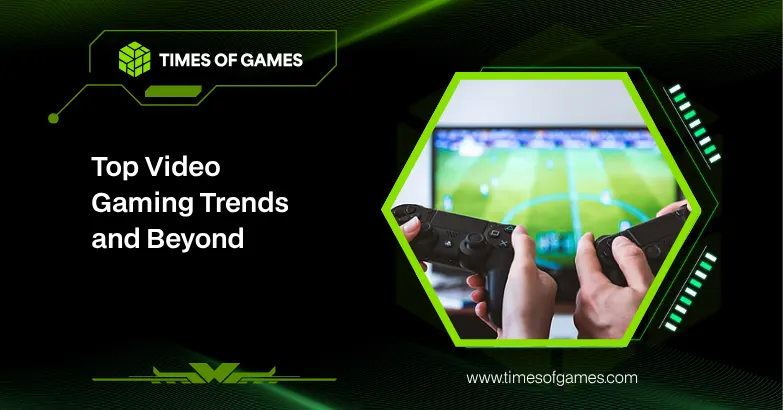Over the years, gaming has evolved into a full-fledged ecosystem of entertainment that is rife with opportunities. While games still require dedicated hardware to run, technology is evolving and soon, that might not be a requirement anymore.
Advancements in cloud infrastructure, the dominance of mobile platforms, and breakthroughs in artificial intelligence have redefined the very foundation of gaming. Global real-time gaming is accessible, allowing players to interact anywhere in the world at the same time.Technology is just one thing in gaming today. Accessibility, personalization, and connection are also key factors. The trends emerging in 2026 reflect an industry that’s more unified, intelligent, and inclusive future for players and creators alike.
Key Takeaways
- Mobile gaming is the juggernaut of the video game industry today.
- AI helps developers in a lot of things, mainly in creating worlds.
- Cloud gaming breaks norms, mainly about gaming hardware.
Why Gaming is Entering a New Era
What gamers are witnessing today is the most inclusive and technologically advanced phase in gaming history. The global gaming market has reached unprecedented heights, surpassing $184 billion in total revenue and beating every other entertainment sector.
Alongside its continuous growth, the gaming industry is also facing a massive surge and diversification in player expectations. More than just design, players also want to have personalization, cross-progression, and live content that evolves on a regular basis.
Today, factors that innovate gaming as a whole include cloud gaming, the rise of mobile gaming, and the inclusion of AI into the developers’ systems. Together, these channel the new era of gaming, which is defined by global accessibility, interconnected ecosystems, and intelligent design.
Cloud Gaming Trends Reshaping Accessibility
The future of gaming no longer depends on powerful consoles or expensive PCs. Cloud gaming has reshaped how games work on devices, which is removing the need of upgrading the actual hardware of devices to run more powerful games.
What is Cloud Gaming and Why it Matters
In a nutshell, cloud gaming is like Netflix for games. Instead of using high-end hardware to run games, players can access games by streaming these from dedicated servers. This includes Xbox Cloud Gaming and NVIDIA GeForce Now, both of which feature massive game libraries, giving players instant access without the need to download or install.
That is why more and more gamers venture to this kind of gaming setup because of the accessibility and comfort it provides, especially because it eliminates the need of having a full storage for their games.
Key Benefits for Players and Developers
For players, it’s already a given. The convenience cloud gaming provides can make everyone a gamer – play anywhere, or through any device. The developers, on the other hand, utilizes cloud gaming as a way to expand their reach.
Platforms Leading the Way
In 2026, Microsoft and Tencent lead the cloud race, leveraging massive infrastructure investments and subscription ecosystems. As for upstarts, companies like Boosteroid and Blacknut have found success in localized, mobile-first cloud strategies across Asia and Latin America.
Challenges and Limitations Ahead
Some of the key hurdles when it comes to cloud gaming are:
- Latency issues – Since developing regions tend to put gaming or entertainment in general in the lower tiers of priority, cloud gaming hinges on consistent internet speeds.
- Data costs – Also due to much fewer infrastructures being present, 5G rollouts are still not that common in these countries.
Tech Breakthroughs: Ultra-high Fidelity And Future Innovations
Cloud gaming is already a breakthrough in gaming technology. But enhancements in compression, adaptive rendering, and AI-assisted graphics optimization are pushing cloud visuals closer to native performance. 8K streaming, real-time ray tracing, and AI-powered upscaling are expected to be rampant in 2026.
The Rise of Mobile Gaming
Mobile gaming was once considered a thing for casual gamers. Today, it is the driving force of the global gaming industry, to the point that it has turned casual gamers into legitimate players.
Why Mobile Dominates the Market
Powered by affordable smartphones, improved connectivity, and titles that rival console experiences in both depth and design, mobile games mixed convenience with quality to upscale casual gaming into a legitimate arm of the gaming industry. Gaming giants like Tencent and NetEase have mastered the mobile ecosystem, offering free-to-play titles that define the game trends in Asia today.
Mobile Esports and Competitive Play
The competitive scene of mobile gaming exploded in popularity. Professional esports leagues for games such as Honor of Kings, PUBG Mobile, and Mobile Legends: Bang Bang, to name a few, have emerged globally. This has caused many sponsors to provide large prize pools for esports tournaments, making pro players a legit and sustainable profession.
Innovations Making Mobile Gaming Better
New technology integrations are shaping the mobile gaming scene. Developers are leveraging cross-play, AR integration, and mini-cloud rendering to close the performance gap between phones and traditional gaming devices.
AI in Gaming: Creative Catalyst & Development Game-Changer
Artificial Intelligence is transforming gaming from the inside out. From being a background tool, AI is now an integral part in building worlds in games, including the stories, features, and social tools used by players in the game.
AI in Game Development and Design
Modern day gaming uses AI to generate environments, NPC dialogues, and more, in minutes. Developers are taking advantage of this mainly to accelerate production.
Personalization and Adaptive Gameplay
AI makes every player’s experience unique. Developers use it to analyze the user behavior to determine gaming trends. This includes determining the right difficulty levels, suggesting various playstyles, or adjusting storylines.
AI in Esports and Player Training
In esports, players and coaches now rely on data tracking, heat maps, and predictive algorithms to refine strategies. AI is also being used to create bots that serve as AI opponents for players to test different combinations and strategies, serving as training for competitive matches.
Challenges Around Ethics and Fair Play
As the saying goes, with great power comes great responsibility. AI in gaming is getting attention for concerns about bias, fairness, and cheating detection. Developers should ensure that the AI algorithms focus on enhancement rather than exploitation.
Other Gaming Trends to Watch
Cloud gaming, mobile gaming, and AI are just some of the few technological enhancements expected to rise in 2026. AR and VR integration, as well as blockchain and NFT-based gaming are also top contenders.
AR and VR Integration in eGaming
Augmented and virtual reality continue to evolve from novelties into mainstream experiences. Apple Vision Pro, Meta Quest 3, and Sony PS VR2 are some examples of how gaming is expected to continue incorporating these types of tech.
Blockchain and NFT-Based Gaming
Blockchain technology and NFTs are reshaping ownership in gaming, allowing players to own digital assets which are unique to them. Despite being volatile today, this trend hints at a future where virtual economies may coexist as big as the real world.
The Future of Gaming in 2026 and Beyond
As technology continues to become more powerful, gaming is projected to transcend entertainment and technology altogether. It is expected that various technological aspects will continue as gaming trends in 2026, such as the metaverse, seamless cross-play, and more immersive social experiences.
From cloud gaming to mobile accessibility to games to AI-driven worlds, the gaming industry is evolving faster than ever. These innovations aren’t just a reflection of what’s the trend in gaming today, but rather how we experience entertainment itself. The next era of gaming is here, and it’s just getting started.




